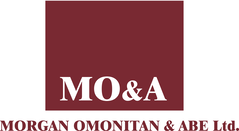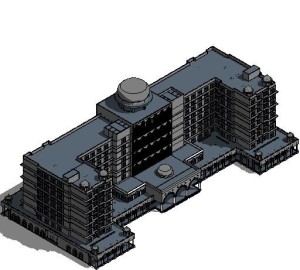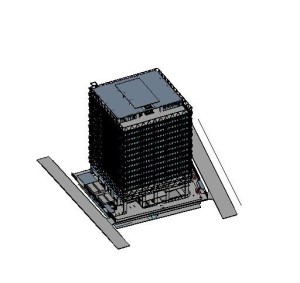Steel construction was initiated in the 1850s and since then, enormous progress has been made to improve the use of steel in construction. Although modulus of elasticity of steel has remained the same over the years, high strength steel has replaced cast and wrought iron, fabrication and erection techniques have been improved and mechanised.
Over the years, steel has become a versatile material that can be used for both single storey and high-rise buildings. Regardless of steel being proven to be a practical choice of material all over the world like the Sears Tower in Chicago (442m), the Empire State Building in New York (381m), and the Aon Centre in Chicago (346m) were all constructed using structural steel. There are still some limitations to using structural steel in Nigeria.
Structural steel makes for longer spans, which then allow column free areas to be achieved. A flexible and functional floor layout can be created because of the flexible nature of steel. The flexible characteristic of steel helped in the construction of the Nestle Factory & Distribution Centre in Sagamu, Nigeria, where two-bay portal frames spanning a total of 60m with a single mid-span support.

Figure 1: Nestle Factory & Distribution Centre in Sagamu, Ogun State, Nigeria.
Another benefit of using steel as compared to any other material is the time gained as a result of the rapid installation of the steel components. Studies have shown that there is approximately a 20-30% reduction in construction time when using structural steel (1). Although the cost of steel is higher than other materials, shorter construction time leads to reduced site management costs which can offset the difference in cost of structural steel.
However, in Nigeria, structural steel members are not readily available in enough variety of sizes, so they are usually imported from Dubai or Ukraine which could take between 4 – 6 weeks. The cost of importing the structural members increases the overall cost of the project and no time is saved in the construction period. As of May 2016, Nigeria Custom Service charges 20% Import Duty and 5% VAT on the total value of structural steel imported.
A Cost analysis was done by Morgan Omonitan & Abe Ltd in 2014 for a Five Star Hotel project in Warri, and in 2015 for a corporate Office Development project in Victoria Island, where a comparison was done on using both reinforced concrete and structural steel.
Based on the market price of structural steel, cement and reinforcing steel at the time of the analysis, it was found that it would take 25% more time for the project to be completed with structural steel on both buildings. This was as a result of the waiting time for the structural steel to be imported.
For the Five Star Hotel, the construction cost of the carcass using structural steel was approximately 30% higher than that of reinforced concrete while that for the Leadway project was 50% higher using structural steel. The significant increase in cost was essentially due to import duty and VAT paid on the imported structural members.
Figure 2: Five Star Hotel in Warri, Delta State, Nigeria.
Figure 3: Corporate Office Development, Victoria Island, Lagos State, Nigeria.
Overall, it is concluded that at this time, structural steel is not a cheaper option to use for high rise developments in Nigeria. The high cost of the steel members outweighs all the benefits of using structural steel. As a result, reinforced concrete is used in the majority of high rise buildings in Nigeria while structural steel is mainly used in projects where uninterrupted large span spaces are the constraint, like warehouses, churches and event centres.



